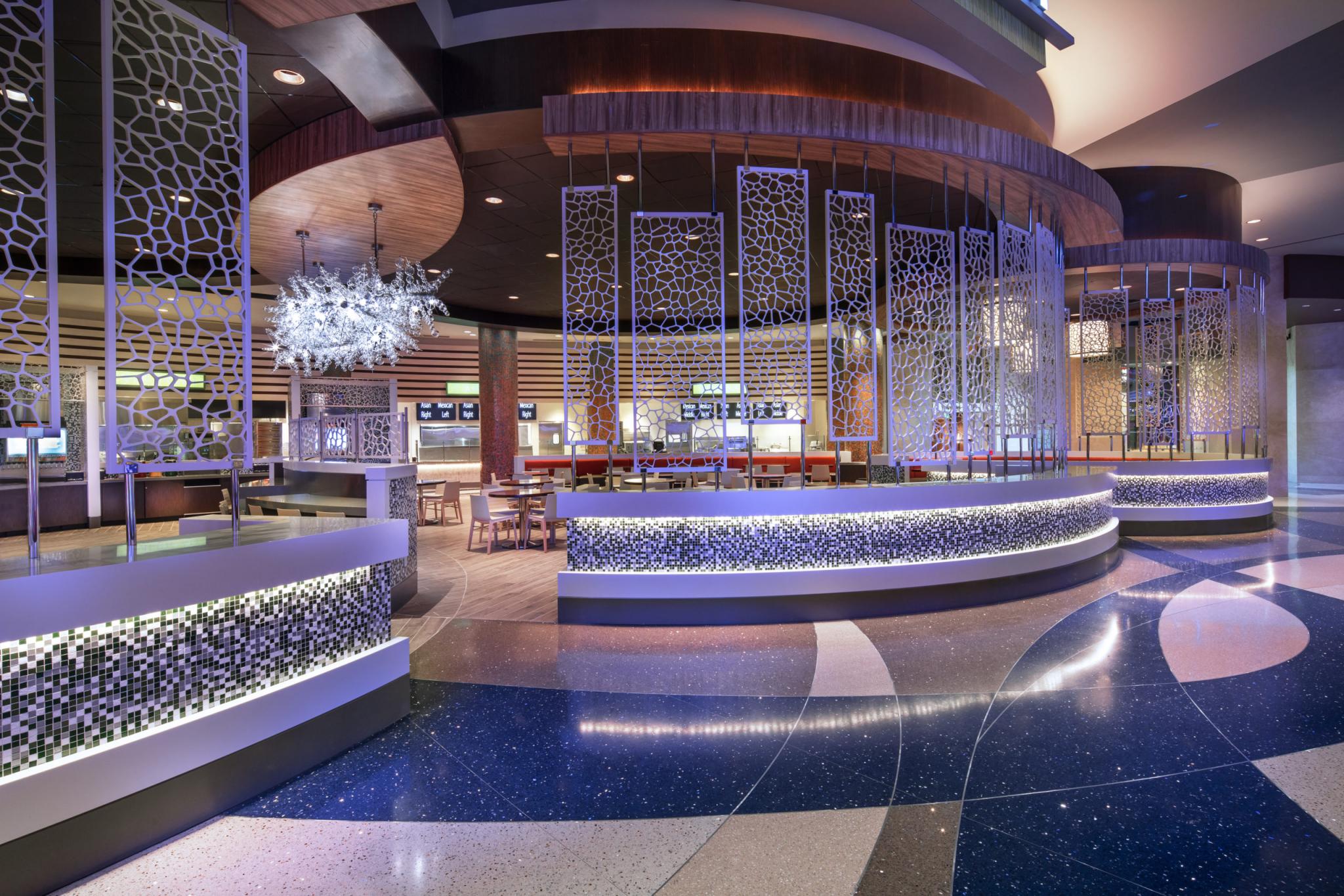An Interview with HBG's F&B Designer Alexandra Milkovich
HBG Design's F&B Design Specialist Alexandra Milkovich, IIDA, NCIDQ, recently provided her perspective on trends in the resort F&B industry for Global Gaming Business' Casino Style magazine. Here, Alexandra expands on her perspective about F&B design and trends. An Associate and Lead Interior Designer in HBG Design’s San Diego office, Alexandra has undertaken extensive research in restaurant operations and design, culinary arts, and food blogging. She is one of HBG’s go-to F&B venue design specialists and offers exceptional experience in boutique F&B design including amenity renovations.
HBG Design is seeing continued interest in incorporating established F&B brands into the casino resort environment. Co-branding with recognizable names from outside the casino industry to anchor key amenities is not a new concept but is gaining more traction with casinos as a means to broaden market appeal and greater name recognition from an expanding customer base. For a while it seemed like expensive branding fees were deterring the introduction of new branded venues into the casino resort. But integrated branding appears to have made a comeback on an even grander scale and commitment.
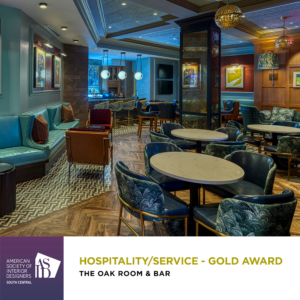 Q: Alexandra, when looking to build a new food/ beverage offering at a casino, what are some of the benefits of choosing a big-name brand or celebrity chef?
Q: Alexandra, when looking to build a new food/ beverage offering at a casino, what are some of the benefits of choosing a big-name brand or celebrity chef?
AM: Having a celebrity name attached to a property is, of course, a great marketing tool for a casino owner. Celebrity chefs are influencers and have a large following of people who want to be part of the next big “thing” in the industry. Unique food and beverage venues provide the ultimate sensory experience in sight, sound, smell, and taste.
We are currently designing a confidential food and beverage amenity with a celebrity chef at a casino property. One of the benefits of working with a celebrity chef is not only their expertise in the culinary field, but also their unique understanding and perspective of how restaurants operate successfully.
Q: What are the benefits of opening an original venue?
AM: Original venues provide the freedom and opportunity to create something unique and progressive, depending on what type of experience the client is seeking to create for its guests. The thrill lies in the possibilities of what could be, in the design, branding and menu. Newness draws crowds, targeting guests looking for unique experiences.
More recently, we see notable brands that are extending into new territory, providing originality of experience with the comfort and reliability of an established brand.
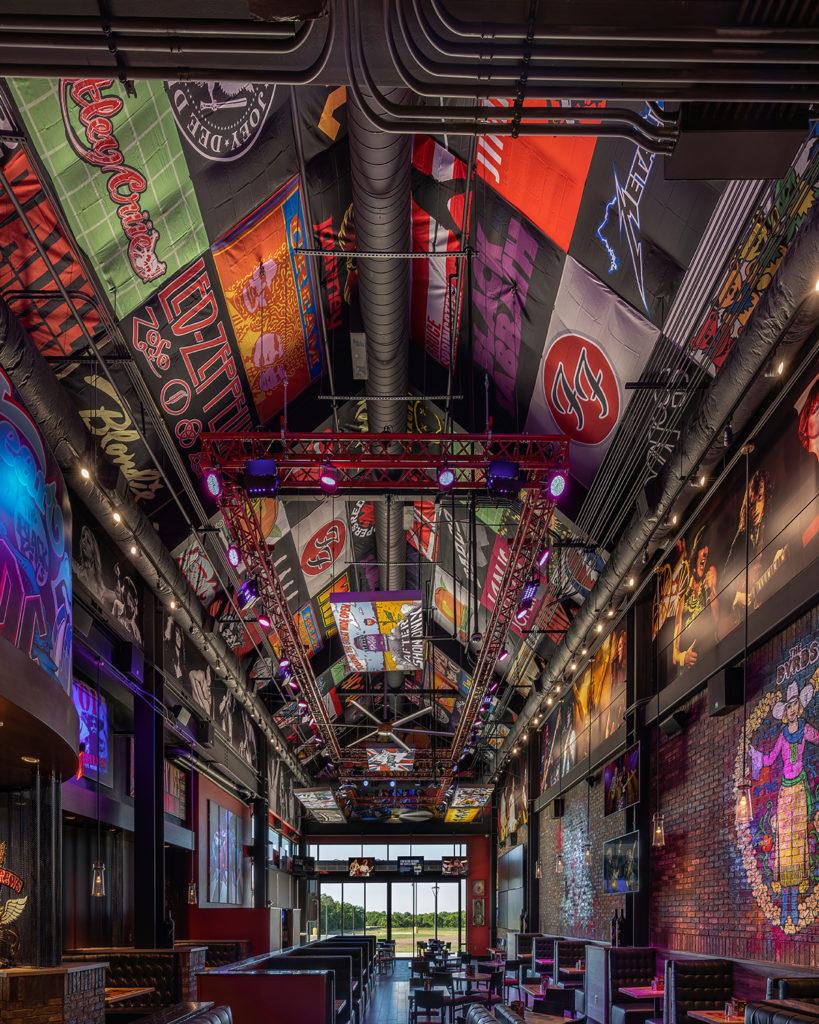 Noted F&B brand Rock & Brews is known for its iconic restaurant and bars, many already integrated within casino properties across the country. The gaming machines located near the Rock & Brews restaurant have typically been some of the most popular with the 65+ demographic, especially.
Noted F&B brand Rock & Brews is known for its iconic restaurant and bars, many already integrated within casino properties across the country. The gaming machines located near the Rock & Brews restaurant have typically been some of the most popular with the 65+ demographic, especially.
Rock & Brews is now moving their brand into all parts of the casino, by opening their first ever Rock & Brews Casino and Restaurant in partnership with The Kaw Nation and Kaw Gaming in Braman, Oklahoma, a project designed by HBG Design and opened in mid-2022.
The 71,000 square foot gaming project–part ground-up and part renovation–features an expertly curated interactive rock-inspired entertainment experience that only Rock & Brews--and its co-founders Paul Stanley and Gene Simmons of iconic rock band, KISS--can provide. The Rock & Brews brand and venues are noted for their heavy integration of rock and roll imagery and iconography.
Across the casino and restaurant, references to musical instruments and vinyl records and murals of rock bands and performers--including a large KISS mural--adorn the walls and ceilings, lending a casual rocker lair vibe.
Inside the large, vaulted Rock & Brews brewhouse, practically every inch of ceiling space is covered with theatrical banners and backlit framed graphics showcasing signature rock and roll graphics. The graphics are framed by a dramatic performance stage lighting truss hanging from the pitched ceiling, painted the signature Rock & Brews branded red. Colorful murals enliven brick walls.
The new Rock & Brews Casino rock and roll vibe fully immerses gaming guests in a concert style environment and high-quality audio and visual experiences with the high-profile F&B brand name proven to attract dining customers.
Q: What are the drawbacks for either?
AM: There are pros and cons to every F&B venture, and every client must decide what is best for their casino operation, their guests and the regional or local market.
Creating a brand-new concept from scratch requires a lot of well-thought-out planning and implementation – from developing the branded concept, to researching and trademarking the name of the restaurant, to creating the menu and the venue design. Most clients we work with will hire branding strategy companies to help craft the concept and streamline the development process. Our designers then shape the physical venue concepts to meet that brand vision.
A celebrity chef driven concept is often tied to the reputation of one individual. Your venue’s success could potentially be affected by the publicity that celebrity receives.
Q: Does the decision change at all for new construction vs. renovating an existing space?
AM: New-build casinos offer the freedom to fully translate an F&B brand concept abundantly into the physical space without confinement. At the recently opened Eagle Mountain Casino in Porterville, California, a new-build development, the new Redwood Taphouse features a soaring redwood ceiling with a grand center bar element wrapped in natural wood panels. As a ground-up structure, the Redwood Taphouse design was implemented as part of the casino build, allowing the F&B spaces to flow cohesively with the brand language, featuring subtle nods to the tribe’s culture woven throughout the grand spaces.

We also renovate existing space inside existing casinos for new F&B, to remain responsive to changing market conditions and new branding opportunities and to refresh a property’s offerings. Our team is adept at new construction and renovations to achieve brand vision.
The restaurant brand concept often dictates the design concept. Depending on how the concept is translated, there may be physical limitations of existing space infill that make renovation more costly. Nothing is impossible, but there are always cost implications tied to construction and addition. Some clients have preferred to reuse space and rebrand by changing finishes and furnishings, rather than making wide-scale structural alterations.
AM: For example, Four Winds Casino Resort in New Buffalo, Michigan, renovated the space of their former two-story Hard Rock Café restaurant and bar venue to accommodate their original Kankakee Grille brand concept, which had already opened at their South Bend location. The Kankakee Grille venue is a combination of performance venue, bar, and restaurant with the ambiance of a casual pub with a high contrast, neutral palette, and contemporary transitional design.
The New Buffalo Kankakee Grille design preserves and incorporates the distinctive 12,000 square foot two-level layout, structural framework, and distinguishing metal railings of the former Hard Rock Café space, also by HBG Design.
Near the entrance, a former HRC retail shop was converted to the Kankakee Grille’s new private dining room. The main bar and main dining room tables and booths remain situated on existing tiered levels to accommodate optimal views toward the ‘Kankakee Live’ performance stage. Mezzanine level bar seating provides birds eye views to the stage excitement.
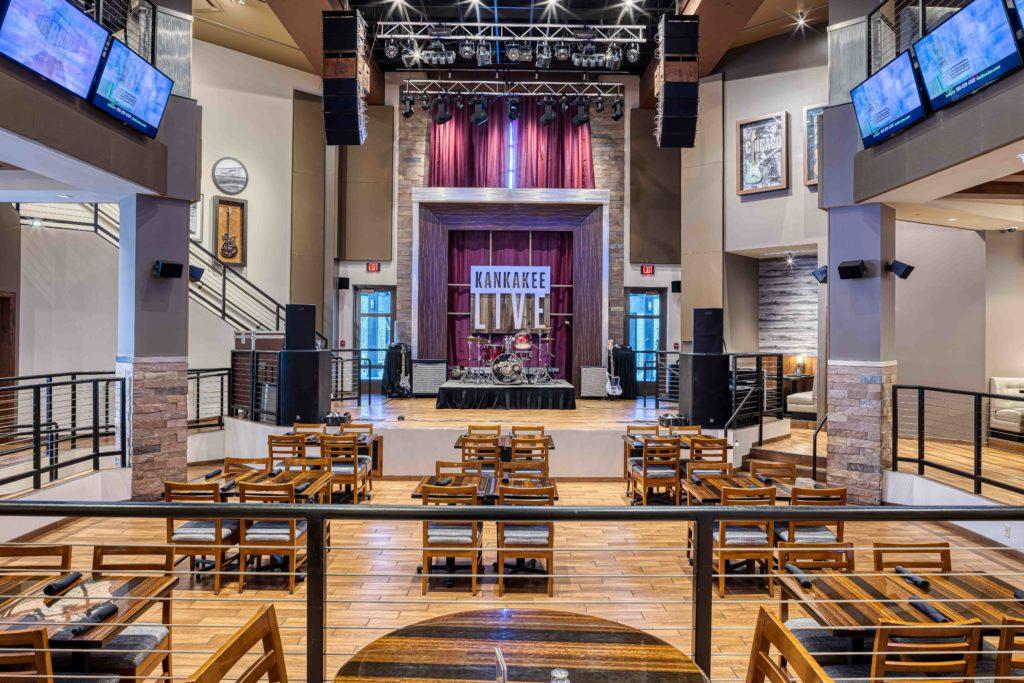 A large decorative light canopy remains over the main bar from its Hard Rock Café incarnation, and the space is separated from the dining floor by custom decorative screening and stone half walls. The Hard Rock Cafe memorabilia cases were replaced by screen ornamentation details that tie to significant Tribal motifs, such as abstracted cattail and sweet grass designs to represent the Kankakee River’s edge.
A large decorative light canopy remains over the main bar from its Hard Rock Café incarnation, and the space is separated from the dining floor by custom decorative screening and stone half walls. The Hard Rock Cafe memorabilia cases were replaced by screen ornamentation details that tie to significant Tribal motifs, such as abstracted cattail and sweet grass designs to represent the Kankakee River’s edge.
To blend with Four Winds Casino’s natural aesthetic, the new F&B concept design incorporates a very modern interpretation of stacked stone and uses wooden plank textures at the entrance and throughout the venue interior. Branded elements have been reimagined within a subdued natural gray, tan and cream-colored design palette that ties to the casino’s contemporary cultural aesthetic.
Q: How does the location of the casino itself impact the process of selecting food/bev options?
AM: Food and beverage options are the first consideration in F&B branding. As F&B venue designers, we are often inspired by these edible selections as we design restaurant and bar spaces that enhance these culinary delights.
The venue location, the local market, and the Owner’s target guest are the #1 driver for all types of design. Some locales are better served by warm, comfortable designs, what we sometimes call approachable luxury. Some casinos, especially those in urban markets, require a higher level of luxury, and that means an elevated dining experience overall. The HBG Design team undertakes extensive research with our clients at the beginning of every project to create space designs that are in sync with the F&B culinary options, and that help attract the target market to the casino property.
HBG Thought Leaders Weigh In: Food and Beverage for Casinos
Food Fight
Which is the best addition to your casino—an original food-and-beverage offering, or a branded restaurant with a built-in following?
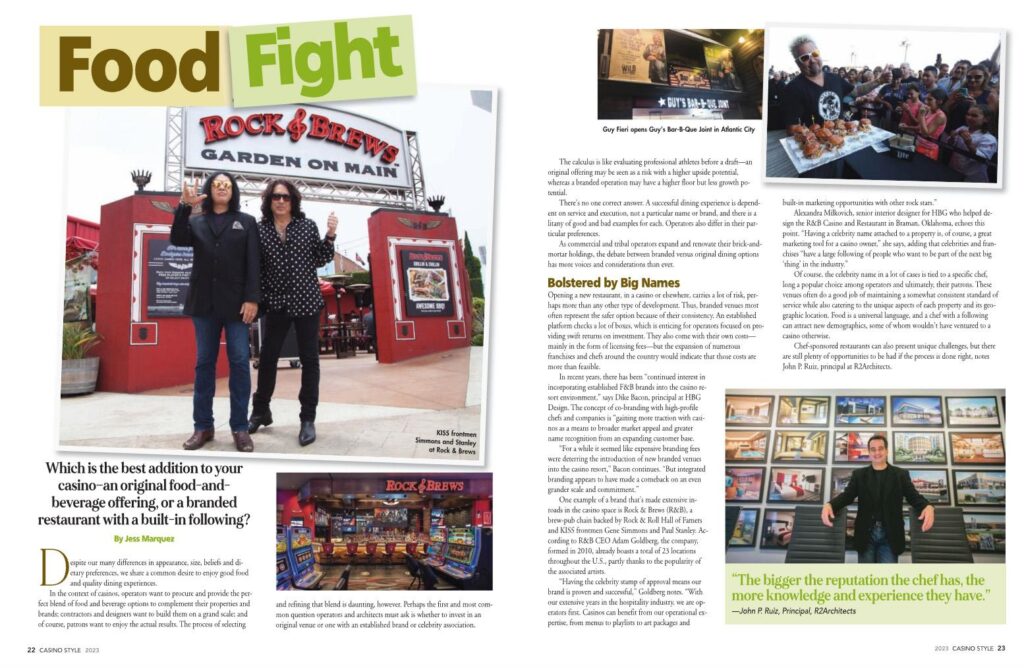 Despite our many differences in appearance, size, beliefs and dietary preferences, we share a common desire to enjoy good food and quality dining experiences.
Despite our many differences in appearance, size, beliefs and dietary preferences, we share a common desire to enjoy good food and quality dining experiences.
In the context of casinos, operators want to procure and provide the perfect blend of food and beverage options to complement their properties and brands; contractors and designers want to build them on a grand scale; and of course, patrons want to enjoy the actual results. The process of selecting and refining that blend is daunting, however. Perhaps the first and most common question operators and architects must ask is whether to invest in an original venue or one with an established brand or celebrity association.
The calculus is like evaluating professional athletes before a draft—an original offering may be seen as a risk with a higher upside potential, whereas a branded operation may have a higher floor but less growth potential.
There’s no one correct answer. A successful dining experience is dependent on service and execution, not a particular name or brand, and there is a litany of good and bad examples for each. Operators also differ in their particular preferences.
As commercial and tribal operators expand and renovate their brick-and-mortar holdings, the debate between branded versus original dining options has more voices and considerations than ever.
Bolstered by Big Names
Opening a new restaurant, in a casino or elsewhere, carries a lot of risk, perhaps more than any other type of development. Thus, branded venues most often represent the safer option because of their consistency. An established platform checks a lot of boxes, which is enticing for operators focused on providing swift returns on investment. They also come with their own costs—mainly in the form of licensing fees—but the expansion of numerous franchises and chefs around the country would indicate that those costs are more than feasible.
"In recent years, there has been continued interest in incorporating established F&B brands into the casino resort environment,” says Dike Bacon, principal at HBG Design. The concept of co-branding with high-profile chefs and companies is “gaining more traction with casinos as a means to broader market appeal and greater name recognition from an expanding customer base.
“For a while it seemed like expensive branding fees were deterring the introduction of new branded venues into the casino resort,” Bacon continues. “But integrated branding appears to have made a comeback on an even grander scale and commitment.”
One example of a brand that’s made extensive inroads in the casino space is Rock & Brews (R&B), a brew-pub chain backed by Rock & Roll Hall of Famers and KISS frontmen Gene Simmons and Paul Stanley. According to R&B CEO Adam Goldberg, the company, formed in 2010, already boasts a total of 23 locations throughout the U.S., partly thanks to the popularity of the associated artists.
“Having the celebrity stamp of approval means our brand is proven and successful,” Goldberg notes. “With our extensive years in the hospitality industry, we are operators first. Casinos can benefit from our operational expertise, from menus to playlists to art packages and built-in marketing opportunities with other rock stars.”
Alexandra Milkovich, senior interior designer for HBG who helped design the R&B Casino and Restaurant in Braman, Oklahoma, echoes this point. “Having a celebrity name attached to a property is, of course, a great marketing tool for a casino owner,” she says, adding that celebrities and franchises “have a large following of people who want to be part of the next big ‘thing’ in the industry.”
Location, Location
Of all the factors that influence the F&B decision-making process, two are perhaps most important: the location of the venue within the casino and the size of the casino itself. Often, these details will help the process shake out—or, as R2A’s Ruiz puts it, “you can start to peel the layers off the onion.”
“It really varies,” he says. “And what I mean by that is the size of the property—does it have three to five outlets, or does the property have 15 to 20 or 25 or more food-and-beverage outlets? How large is the property? That’s where these things start.”
Renovations and expansions of existing spaces are more common than brand-new builds, which means that casinos often have a predetermined space in which to fit a venue, and there are do’s and don’ts that correspond to that scenario.
As Cuningham’s Houck says, “One of the bigger questions is, what do you want to fill if it’s a large casino? It’s kind of like 101—you don’t put a Mexican place next to another Mexican place. So there is a sense of looking at what’s needed.”
Additionally, changes in patron preferences can make certain concepts outdated, and renovating can allow operators to “remain responsive to changing market conditions and new branding opportunities and to refresh a property’s offerings,” says HBG’s Milkovich.
Casinos big and small are like mini-ecosystems, constantly trying to find the best flow, the best integration of amenities and gaming. As such, companies will vary in their brands and tastes (no pun intended), and architects and designers will work to keep pace with those changes.
“Different clients and different properties have different techniques or theories behind it,” SOSH’s Sochocky explains. “Some clients we work with actually like their top restaurant all the way at the back of a casino, so they can draw people through the casino floor to get to it. Some of our clients like it at the front door… Their gaming floor also has a lot to do with it. It does become a little bit of a game of real estate.”
Regardless of the type of venue, it’s clear that the true beneficiaries are the patrons, the ones who get to fully enjoy the experiences that operators, designers and architects work so hard to create. A truly successful venue is one that can satisfy its target audience, again and again and again.
Dining Design Post-COVID - Why Flexibility is Key
See full article on Post-COVID dining design in Memphis Business Journal
When Brice Bailey, the owner of the Staks restaurants in East Memphis and in Germantown, reopened after the pandemic-induced shutdown of March 2020, he had to make some changes.
“When we reopened, we added barriers in between all the booths. They were required to exceed more than a foot above the head of the person eating,” Bailey said. “We took away all condiments from the table. We put circles down on the floor, asking people to stay six feet apart when they were in line.”
He also took out tables, and spaced those that remained at least 10 feet apart, rather than the six feet that was mandated at the time by the Shelby County Health Department.
Such design alterations were the norm for restaurateurs looking to follow the rules put down by the health department and to ease a COVID-rattled customer base.
Planning for the future
When the third and latest Staks restaurant opens at Silo Square in Southaven, it will have one feature that perfectly sums up the times: The outdoor seating will outnumber the indoor seating.
Bailey said he was being proactive when it comes to the design of the new restaurant.
“We’re definitely designing it in case we have to go back into some sort of lockdown,” he said.
Design tweaks include a larger kitchen to accommodate third-party orders and more generous spacing in the main dining room so that pick-up orders don’t disturb the flow.
Graham Reese of Memphis-based Graham Reese Design Group said one of his biggest pandemic-times design concerns revolves around surfaces — be it the floors, wall treatments, or furniture. For this, he’s turned to easily cleanable vinyls rather than textiles.
Another consideration is spacing. Reese said furniture needs to be moveable. Shared booths are out, though detachable booths are in.
“They’re planning for now,” Reese said of the restaurateurs he works with, “but they’re also planning for the future.”
One issue Reese has run into is trouble accessing materials. He said the U.S.’s poor relationship with China is to blame.
“For instance, I had a project somewhat recently where we had things specified. A lot of the pieces — the furniture frames and stuff — were made in China. Well, you can’t do that anymore. The lead times, to this day, are still pretty outrageous. There are shortages on materials and goods.”
To rectify this, Reese has gone to U.S. manufacturers.
Ultimately, Reese said, restaurants are about the food.
“The key is: One, it has to be the food. Second of all, the design should overlap and play a big part of that food that is served,” he said. “You can’t really do anything right now about [the pandemic], but you can make [the restaurant design] visually appealing.”
Being flexible
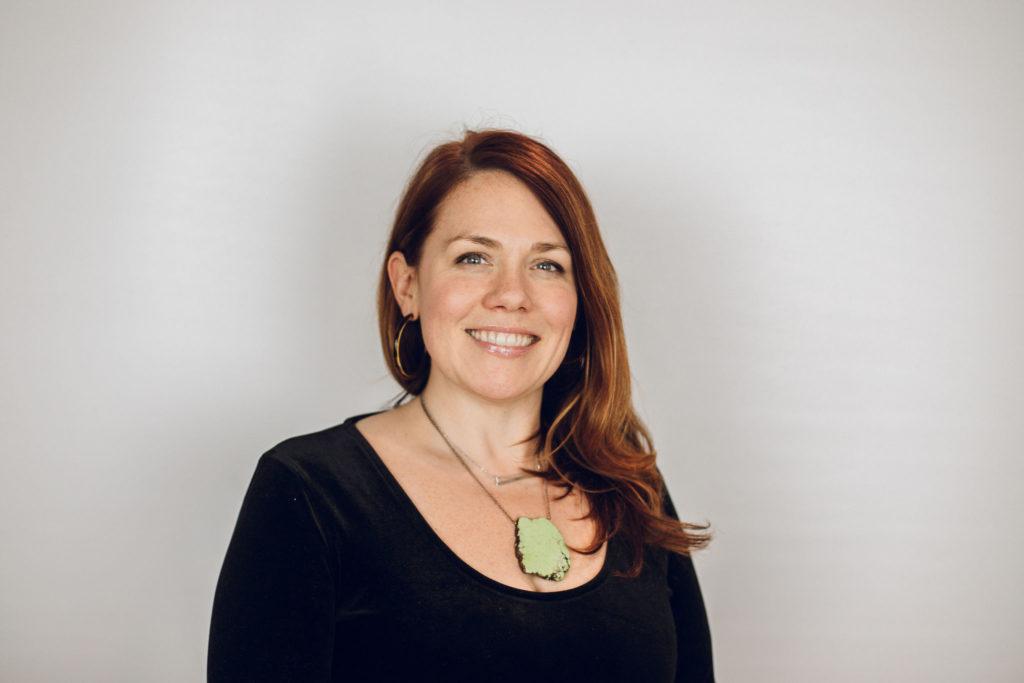
Emily Marshall is interior design director at HBG Design. The company — which has offices in Memphis, San Diego, and Dallas — specializes in hospitality projects. Marshall has worked on the Hard Rock in New Orleans and the restaurants at Cache Creek Casino in California.
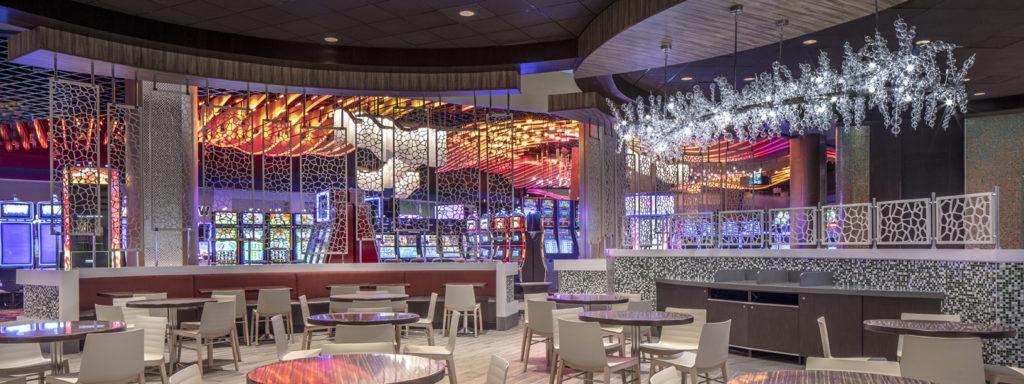
One aspect of restaurant design that has been keeping her busy is what to do with the buffets.
“For the buffets, we’ve explored some concepts where, instead of coming in and paying one price and have going to the buffet line, it’s more that made-to-order situation, more of a food hall kind of design.”
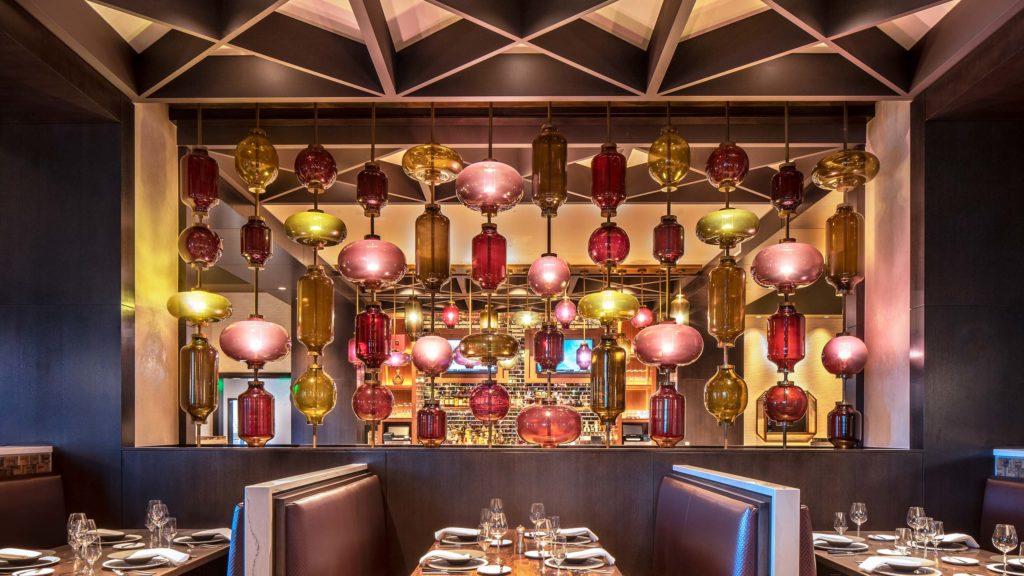
She said a lot of restaurateurs want their spaces to look filled and busy without being filled and busy.
“We’re doing some intuitive space-shaping or space-making,” Marshall said. “We’re doing some interesting design elements like divider walls with plants or divider walls with some type of design element, so it feels like the space is not just empty where the tables used to be.”
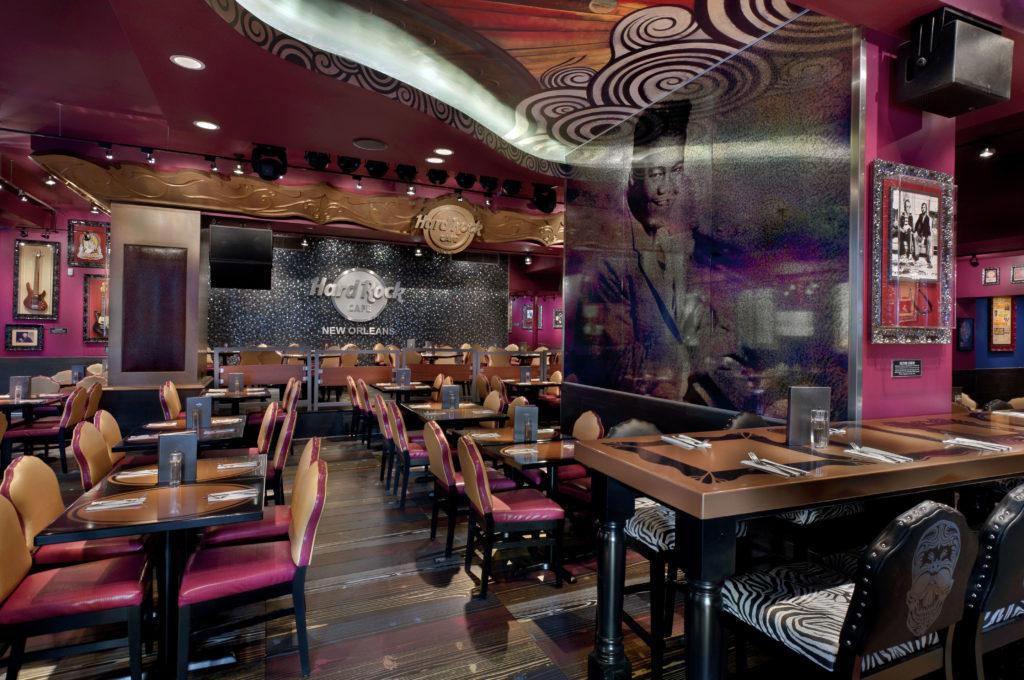
She said some of the restaurateurs she worked with didn’t want to change anything, hoping that the pandemic would pass sooner rather than later.
That’s where flexibility in the design comes in.
“Flexibility really became super key,” Marshall said. “A flexibility that would allow the restaurant to move their space around without us. We did a bunch of layouts on the front end to let them know, this would be max capacity, this would be what you would do now and then, this would be somewhere in between — 100 chairs and 50 chairs, but definitely flexible and lighter.”
She said that, in some cases her firm offered two layouts.
Designer Valentina Shands-Puppione, managing principal for ArchInc, has worked on a number of restaurant projects, including Blue Honey Bistro in Germantown, the Starbucks at Watkins and Union, and McEwen’s.
She said when the pandemic hit, she already had some jobs on the books, and the restaurateurs had a request that was identical to one Marshall heard.
“They [were] asking specifically for a little bit more flexibility,” Shands-Puppione said. “They’re asking for more focus on exterior spaces and more creativity toward the exterior spaces.”
“We used what we had learned through Edge Alley: how to make the parking space comfortable, safe, and not right on the street.”
Much of the work Shands-Puppione is doing involves a bit of forecasting.
“We’re trying to plan for all of it, which is fun,” she said. “We’re trying to plan for restaurants to have the six feet apart now and then get back to normal.
“For example, we’ve got a restaurant that is assuming they’ll have to do a lot of outdoor seating when they first open back up, but eventually they’ll want to be more indoors,” she continued. “We’re focusing a lot of our energy on the outside and have that be a great space. Their current location doesn’t have outdoor seating. This is going to be new for them, but it also gives them a chance to kind of explore that.”
She said restaurateurs want tables that can be moved around to accommodate distance requirements, and that affects other elements of the design.
“We’re not putting light fixtures over spaces that will be detrimental in the future,” she said. “We are not going to locate a big chandelier in the space and then have to move the tables where it would look silly later. We’re working on lighting that can be mobile in the space.”
The best part of the job for Shands-Puppione is figuring out a solution that makes everybody happy.
“I like trying to figure out how to make it work for somebody,” she said. “It’s kind of the puzzle — that’s always fun, and, of course, we love it.”
It’s going to cost you
Restaurateurs and the designers who work with them are dealing with rising costs. Chief among them are labor and materials.
Bailey of Staks estimates he’ll spend almost twice the amount he did on the Southaven location than he did on his most recent restaurant in Germantown. “I just got bids back from contractors today to build the location in Southaven,” he said in March. “The bid for a 2,800-square-foot location in Southaven today came back from the builder who built my Germantown one, which is 3,800 square feet and [was built in] 2018. The cost [for Southaven] is more than double for just as much construction work.”
“No matter where you get it, overseas or domestically, materials, furniture, everything is costing more,” said Marshall of HBG Design.
She said that lately more restaurant design has been borrowing from health care, namely its fabrics.
“Health care design already had these antiviral and antimicrobial materials that have been on the market for a while,” Marshall said. “We’ve seen the connection between health care design and hospitality design because these fabrics that are offering all of this protective barrier and durability are becoming more design-forward.”
These fabrics are more expensive.
“It is a little bit more expensive now. Whereas before you could get away with just a regular vinyl, our clients are now wanting the added protection of the antimicrobial or the bleach cleanable, which does cost a bit more,” Marshall said.
“On top of that, lumber prices are crazy expensive right now,” she added. “So what we’re seeing is a lot of renovations rather than new builds. People are wanting to utilize the space they have.”
Cutting costs is where the creativity comes in.
“Where we would have maybe done a really cool wall covering, we’re now leaning more heavily on our local artists, connecting the dots within our own community to get people to come through with a mural, rather than a wall covering,” Marshall said.
Going with the flow
Jill Hertz of Jill Hertz Interior Design was approached for the South of Beale jobs for a bit of “drive-by design,” she said. Drive-by design is a common enough occurrence. It is a quick consult, involving paint colors and general brain-picking.
The East Memphis space was the first. Hertz said she took a look around and saw that a lot of work was needed, so she gave the owners, Ed and Brittany Cabigao, a proposal. That led to her being hired for the Downtown South of Beale job.
For the East Memphis location, she brightened up the space, adding dashes of yellow. For Downtown, Hertz said she had to make herself not go too overboard on the plaids. The two restaurants aren’t matchy-matchy in design. Instead, they are linked through their branding.
Hertz said a main concern for the Cabigaos was the flow.
“We ended up doing two space plans for tables for both buildings. So, they can move it on an as-needed basis,” she said.
Furniture for the spaces are given great consideration. At one point, a large community table was discussed, but ultimately dismissed. They ordered tables that could be put together or taken apart. There is lounge seating at the Downtown location, but it is designed so patrons can be separated.
For Hertz, pandemic design is not the wave of the future; it is merely a blip.
“The thing about restaurants and bars is that the way that they flourish is through occupancy — high occupancy,” she said. “I really think that once we get a handle on this globally, we’re going to be in a Roaring Twenties situation. People are going to be socializing and partying and gathering all over the place.”

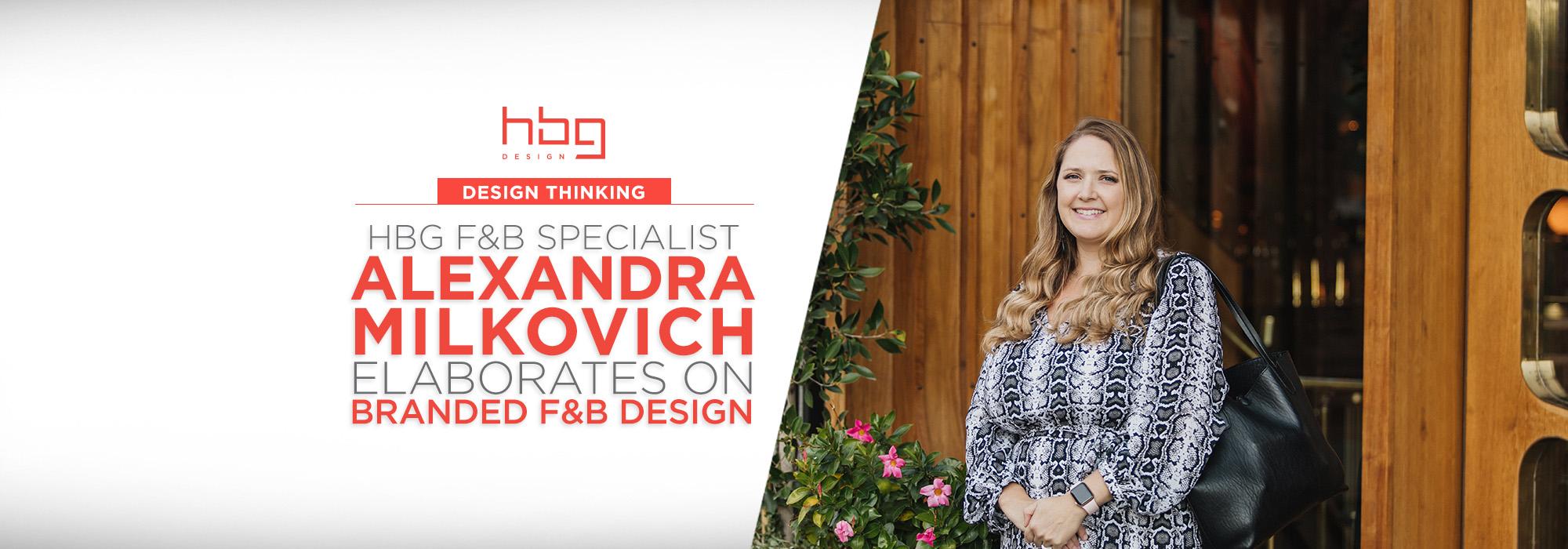
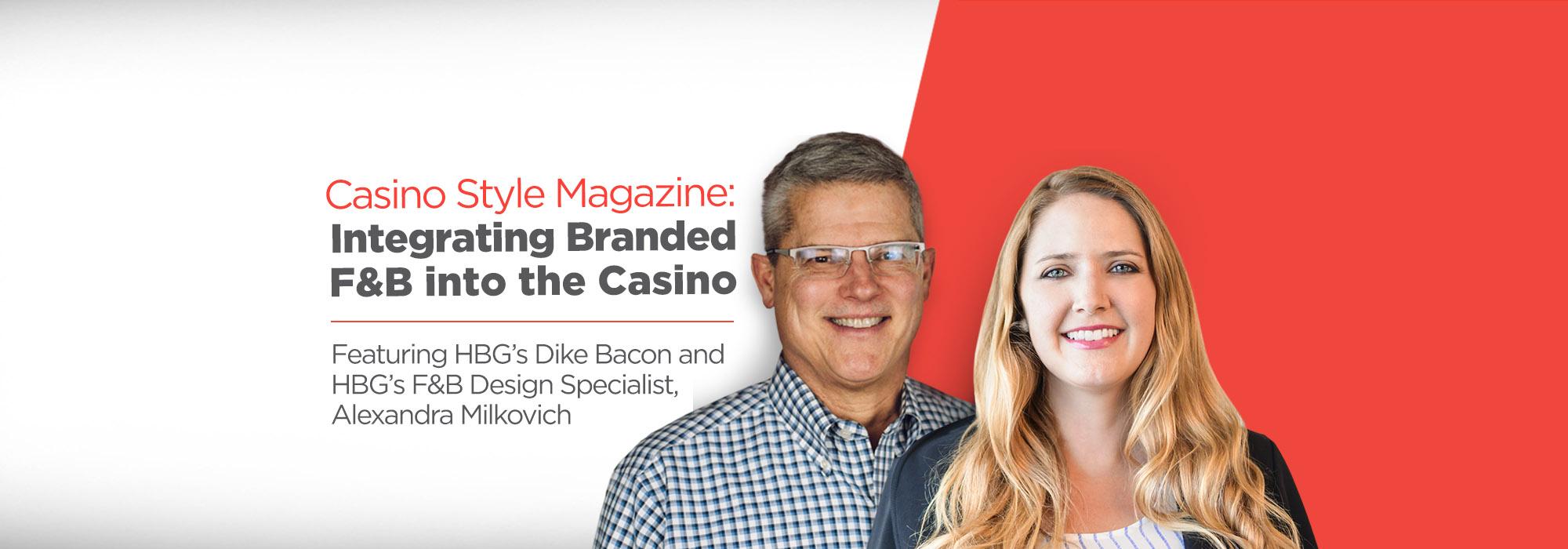
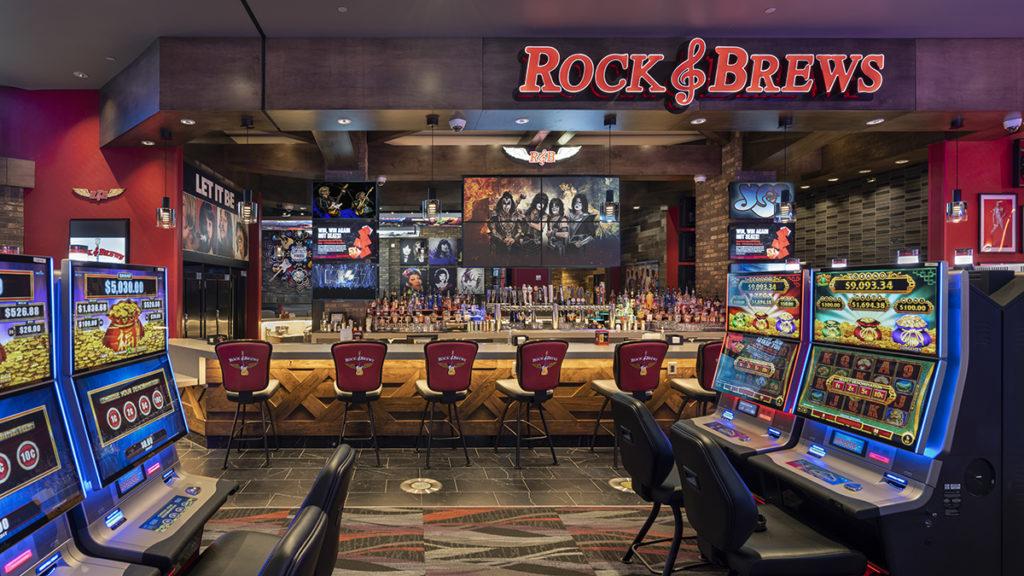 "In recent years, there has been continued interest in incorporating established F&B brands into the casino resort environment,” says Dike Bacon, principal at HBG Design. The concept of co-branding with high-profile chefs and companies is “gaining more traction with casinos as a means to broader market appeal and greater name recognition from an expanding customer base.
"In recent years, there has been continued interest in incorporating established F&B brands into the casino resort environment,” says Dike Bacon, principal at HBG Design. The concept of co-branding with high-profile chefs and companies is “gaining more traction with casinos as a means to broader market appeal and greater name recognition from an expanding customer base.